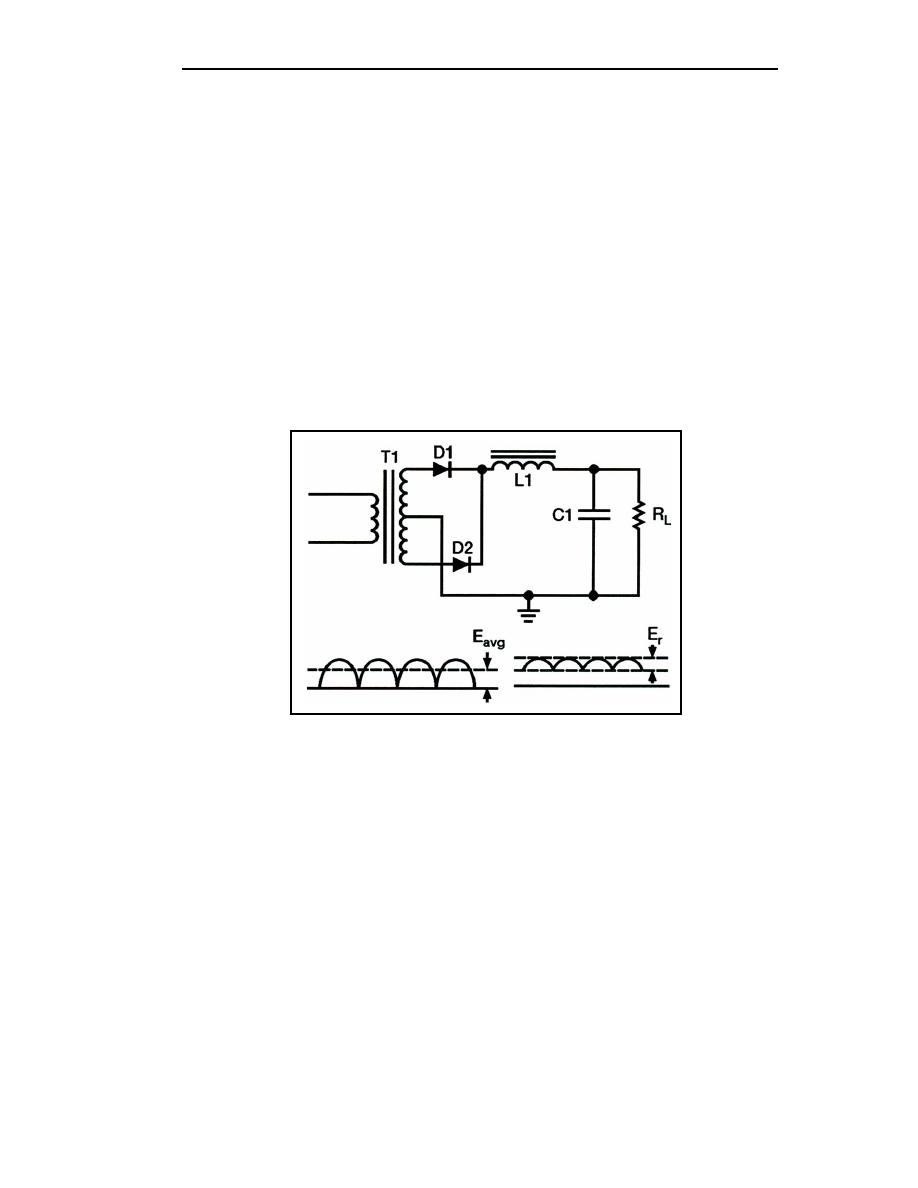
TC 9-62
LC Choke-Input Filter
4-49. The LC choke-input filter is used primarily in power supplies where voltage
regulation is important. It is also used where the output current is relatively high and
subject to varying load conditions. This filter is used in high power applications such as
those found in radars and communication transmitters.
4-50. Figure 4-19 shows that this filter consists of an input inductor (L1), or filter choke,
and an output filter capacitor (C1). Inductor L1 is placed at the input to the filter and is in
series with the output of the rectifier circuit. Since the action of an inductor is to oppose
any change in current flow, the inductor tends to keep a constant current flowing to the
load throughout the complete cycle of the applied voltage. As a result, the output voltage
never reaches the peak value of the applied voltage. Instead, the output voltage
approximates the average value of the rectified input to the filter (see Figure 4-19). The
reactance of the inductor (XL) reduces the amplitude of ripple voltage without reducing the
DC output voltage by an appreciable amount (the DC resistance of the inductor is just a
few ohms).
Figure 4-19. LC Choke-input Filter
4-51. The shunt capacitor (C1) charges and discharges at the ripple frequency rate.
However, the amplitude of the ripple voltage (Er) is relatively small because the inductor
(L1) tends to keep a constant current flowing from the rectifier circuit to the load. The
existing at the output of the filter, and thereby shunts the ripple component around the
load. The capacitor attempts to hold the output voltage relatively constant at the average
value of the voltage.
4-52. The value of the filter capacitor (C1) must be relatively large to present a low
opposition (XC) to the pulsating current and to store a substantial charge. The rate of the
charge for the capacitor is limited by the following:
Low impedance of the AC source (the transformer).
By the small resistance of the diode.
By the cemf developed by the coil.
4-18
TC 9-62
23 June 2005



 Previous Page
Previous Page
